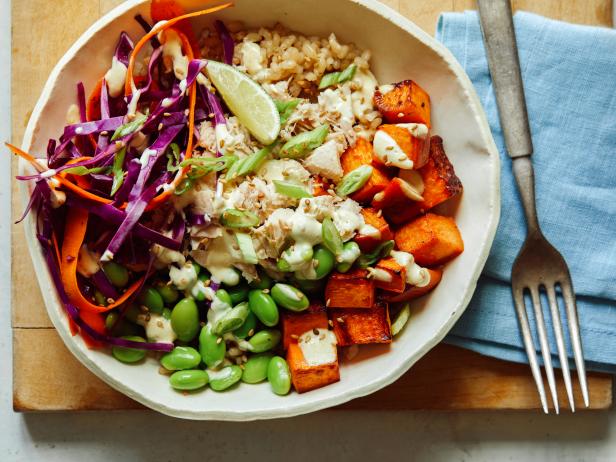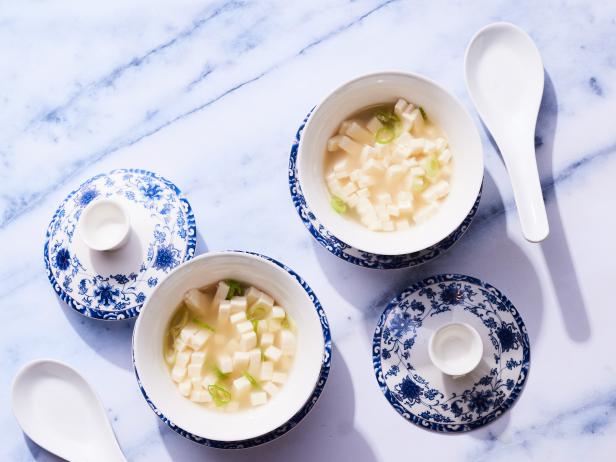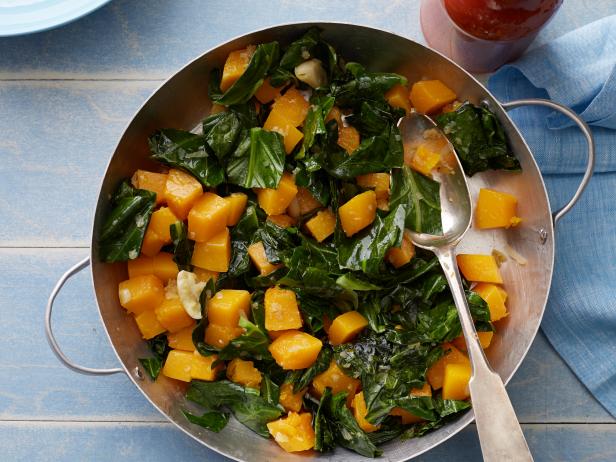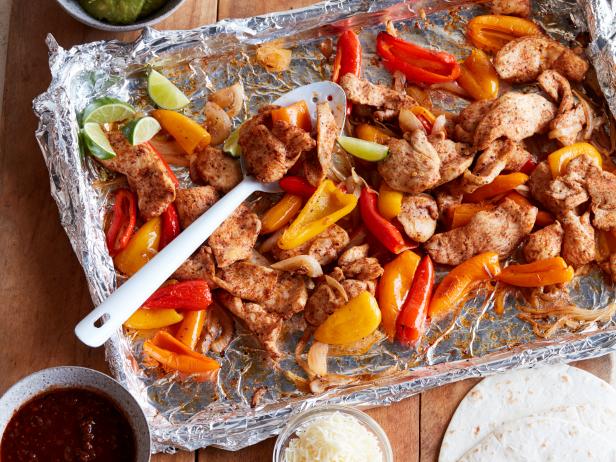110 Healthy Dinners That Are Ready in 40 Minutes or Less 111 Photos
Healthy food fast? Yes, it's possible! These quick and easy meals are on the table in no time.
45 Healthy Vegetarian Recipes You'll Make All the Time 52 Photos
These meatless meals are perfect, any night of the week.
75 Healthy Desserts to Satisfy Every Craving 78 Photos
From lightened-up cheesecake and brownies to tempting fruit desserts, you can feel good about treating yourself to these sweet bites.
38 Healthy Soup Recipes That Are Cozy and Comforting 47 Photos
Chicken noodle, minestrone, lentil and more—we’ve got healthy recipes for all your favorites.
99 Healthy Sides That Will Make It a Meal 103 Photos
From lightened-up potato dishes and hearty grains to fresh and flavorful salads bursting with veggies, these sides make it simple to put a wholesome meal on the table, any night of the week.
125 Weeknight Dinners That Make It Easy to Eat Healthy 125 Photos
Looking for some fresh inspiration for your dinners? Fill up on these flavorful recipes all week long.
The editors and culinary experts at Food Network Kitchen believe healthy and delicious aren’t mutually exclusive. And we know you come to us to find recipes, tips and expert guidance that bring the two together. You want nutritious, affordable meals that work well and will become staples in your kitchen. You want to make reaching your health goals easier – with plenty of flavor to boot. We’re here to help you cut through the noise of the latest one-ingredient wonders, viral diets and shiny new products to help you decide what’s worth incorporating into your life.
What Does “Healthy” Mean at Food Network Kitchen?
While the term “healthy” can mean many different things, we think healthy eating can be flavorful, diverse, varied and interesting – while also providing nutritional benefits. We like to focus on foods that are nourishing and eating patterns that feel sustainable. That means never labeling foods as “good” or “bad” — there is space for butter, cheese and bread right alongside greens, whole grains and proteins in a healthy kitchen.
We believe in helping you make mindful, informed choices by providing trustworthy, research-backed information in all of our wellness content, including our Healthy Eats blog, where you’ll find the latest nutrition news and advice. All of our stories that touch upon health, nutrition and wellness are written and/or reviewed by registered dietitians, who expertly interrogate and synthesize the latest studies and health news to figure out what’s important and what you don’t need to worry about. We take any single study with a grain of salt; it takes a collection of like studies with the same results for a claim to become more convincing.
Food Network Kitchen also always works with registered dietitians to develop healthy recipes. If a recipe is tagged “healthy” or appears in any of our healthy recipe collections, it has been held to a specific nutritional standard (more on that below).
That said, healthy eating is always personal. And we encourage talking with your healthcare provider to figure out what’s best for you. We’re just here to show you what that could look like in your kitchen.
What’s a Registered Dietitian?
You may see two titles in the world of nutrition: dietitian and nutritionist. But what’s the difference? While all dietitians are nutritionists, not all nutritionists are dietitians.
A registered dietitian (RD) is a recognized medical professional who specializes in nutrition. RDs must meet several requirements to receive their title, including completing a Master’s degree, completing a national exam (and licensure if a state requires it), earning continuing education hours every five years and sticking to their profession’s code of ethics.
A nutritionist is a self-proclaimed title, with no set of requirements to use it.
Meet Our Experts
It’s important to us that our content includes the perspectives of qualified experts you can trust. That’s why we aim to have every health-related article on Healthy Eats written or vetted by a registered dietitian (RD). In fact, our site’s healthy eating section was created in 2009 by two RDs, Dana Angelo White, M.S., R.D., A.T.C. and Toby Amidor, M.S., R.D., C.D.N., who continue to regularly advise and write for us today. Our stable of contributing RDs has since grown, many of whom have their own specialized areas of expertise.
Dana Angelo White, M.S., R.D., A.T.C.
Registered Dietitian & Certified Athletic TrainerDana has been a nutrition expert at FoodNetwork.com for over 16 years. She is a registered dietitian nutritionist and certified athletic trainer. She works as a journalist and is the author of nine cookbooks.
Toby Amidor, M.S., R.D., C.D.N.
Registered Dieitian & Food Safety ExpertToby has been a nutrition expert at FoodNetwork.com for 16 years. She is an award-winning registered dietitian and the author of 10 published cookbooks.
Wendy Lopez, MS, RDN, CDCES
Registered Dietitian & Certified Diabetes EducatorWendy Lopez, a Registered Dietitian/Nutritionist and Certified Diabetes Educator, brings over a decade of expertise to her role at Food Network. As co-host of the Diabetes Digital podcast and co-founder of Diabetes Digital, Wendy champions accessible and culturally relevant diabetes education.
Christine Byrne, MPH, RD
Registered Dietitian & Disordered Eating SpecialistChristine Byrne, MPH, RD, is a registered dietitian, trained chef and food journalist. She has been a contributing writer at Food Network since 2019. She aims to help people feel empowered, not stressed out or guilty, when making food choices.
Andrea Mathis, MA, RDN, LD
Registered Dietitian & National Media SpokespersonAndrea Mathis, MA, RDN, LD (also known as Andy) is a contributor at FoodNetwork.com. Andy is a registered dietitian nutritionist and the author of The Complete Book of Smoothies: 115 Healthy Recipes to Nourish, Heal, and Energize.
Serena Ball, M.S., R.D.
Registered Dietitian & Culinary InstructorSerena is a registered dietitian, food writer, and culinary instructor. She has been a contributing writer and a recipe developer for FoodNetwork.com for a decade where she shares science-based nutrition information on food trends, gut health and brain health.
Rahaf Al Bochi, RDN, LD
Registered DietitianRahaf Al Bochi, RDN, LD is a Registered Dietitian Nutritionist, freelance writer and founder of Olive Tree Nutrition LLC. As a contributing writer for Food Network, she shares evidence-based nutrition articles on women’s health and prenatal nutrition to empower women on their motherhood journey.
What Makes a Recipe “Healthy?”
Curated by our editorial team, “healthy” recipes at Food Network must be delicious, have redeeming nutritious qualities and fit nutritional standards that we’ve created with registered dietitians. We aim to put an end to the idea that "healthy" has to be bland or boring. Healthy cooking also doesn’t have to mean pricey or hard.
To find our healthy recipes, look for the “Healthy” tag on recipe pages or explore our Healthy content.
The Standards
Our healthy guidelines were created by Dana Angelo White, M.S., R.D., A.T.C. and Toby Amidor, M.S., R.D., C.D.N. in conjunction with Food Network Kitchen. The standards are based on those recommended by the Dietary Guidelines for Americans (DGAs) and National Institutes of Health, and assume a daily 2,000-calorie diet. We include benchmarks for saturated fat and sodium, nutrients that if consumed in excess can negatively impact health.
Just because something is low in calories doesn’t automatically mean that it’s healthy. Dishes that may be a bit higher in calories can often provide a lot of good nutrition. You might see “healthy” recipes as high as 600 calories, but the majority are between 400 and 500 calories per serving.
While other factors, such as amount of added sugar, can affect how “healthy” a dish is, we find that total calories, total and saturated fat, and sodium count are helpful criteria for deeming a recipe healthy. Because each recipe is unique, these baseline requirements allow the flexibility and personalization you may need. A single recipe is only one part of an overall healthy diet and lifestyle.
Main Dishes (includes one-pot, complete meals and smoothies)
Calories: 600 or less per serving
Total Fat: 35 grams or less per serving
Saturated Fat: 15 grams or less per serving
Sodium: 1000 mg or less per serving
Sides, Snacks and Beverages (excluding smoothies)
Calories: 300 or less per serving
Total Fat: 20 grams or less per serving
Saturated Fat: 10 grams or less per serving
Sodium: 1000 mg or less per serving
Desserts
Calories: 400 or less per serving
Total Fat: 20 grams or less per serving
Saturated Fat: 10 grams or less per serving
Sodium: 1000 mg or less per serving
We also allow for a little wiggle room, so you might find a recipe that deviates plus or minus 10-percent from these standards.
What We Think About Special Diets
Food Network Kitchen takes a healthy dose of skepticism toward special diets, especially more extreme or restrictive ones. There are a wide variety diets and eating strategies out here, but we believe no matter what pattern you tend toward, how you eat should feel intentional, nourishing, joyful and sustainable. Here, we want to empower you with the tools and culinary inspiration to eat in a way that’s best for you.
Where relevant, we’ll indicate on a recipe whether a dish fits within specific diets (e.g. vegan, high-protein). If it does, it’s been vetted by our culinary team and/or nutritionists.
You might also find healthy recipes in nutrient-forward collections, like high-protein or low-carb, which are also vetted by nutritionists.
Low Carb
Recipes with 15 grams or less of carbohydrates per serving. Check out some of our low-carb recipes here.
Diabetes-Friendly
Recipes with 30 grams or less of carbohydrates per serving. Check out some diabetes-friendly recipes here.
Heart Healthy
Main Dish:
Calories: 400 or less per serving
Total Fat: 15 grams or less per serving
Saturated Fat: 10 grams or less per serving
Cholesterol: 60 milligrams or less per serving
Trans Fat: 0 grams per serving
Side, Soup, Salad, Beverage, Snack, Dessert:
Calories: 250 or less per serving
Total Fat: 10 grams or less per serving
Saturated Fat: 5 grams of less per serving
Cholesterol: 45 milligrams or less per serving
Trans Fat: 0 grams
Here are some heart-healthy recipes.
High Fiber
Recipes with 5 grams or more of fiber per serving. Get some high-fiber recipes ideas here.
High Protein
Recipes with 15 grams or more of protein per serving. Get high-protein recipe inspiration here.
Lower Calorie
Main Dish:
Calories: 400 or less per serving
Side, Soup, Salad, Beverage, Snack, Dessert:
Calories: 250 or less per serving
Get some lower-calorie recipe ideas here.
Lower Fat
Main Dish:
Total Fat: 15 grams or less per serving
Side, Soup, Salad, Beverage, Snack, Dessert:
Total Fat: 10 grams or less per serving
Gluten-Free
Contains ingredients without gluten or processed foods that can easily be found as “gluten free.”
As manufacturers continually change processing plants and methods, check labels on all ingredients before purchasing to ensure that particular brand is in fact gluten-free.
Get some gluten-free recipes here.
Lower Sodium
Main Dish:
Sodium: 350 milligrams or less per serving
Side, Soup, Salad, Beverage, Snack, Dessert:
Sodium: 250 milligrams or less per serving
Check out lower-sodium recipes here.
Low Cholesterol
Recipes with 60 milligrams or less of cholesterol and 4 grams or less of saturated fat per serving
Lower Added Sugar
Recipes with 8 grams or less of added sugar per serving.
Added sugars are caloric sweeteners added to recipes. Unlike naturally existing sugars from fruit and dairy, added sugars will be included in the ingredient list on a recipe or food packaging. Newly revised Nutrition Facts Panel requirements include a daily value limit for added sugars of 50 grams per day for a 2,000 calorie diet.
Forms of added sugar include granulated sugar, brown sugar, honey, maple syrup, agave syrup, date syrup, molasses, coconut sugar, corn syrup and turbinado sugar.

































































